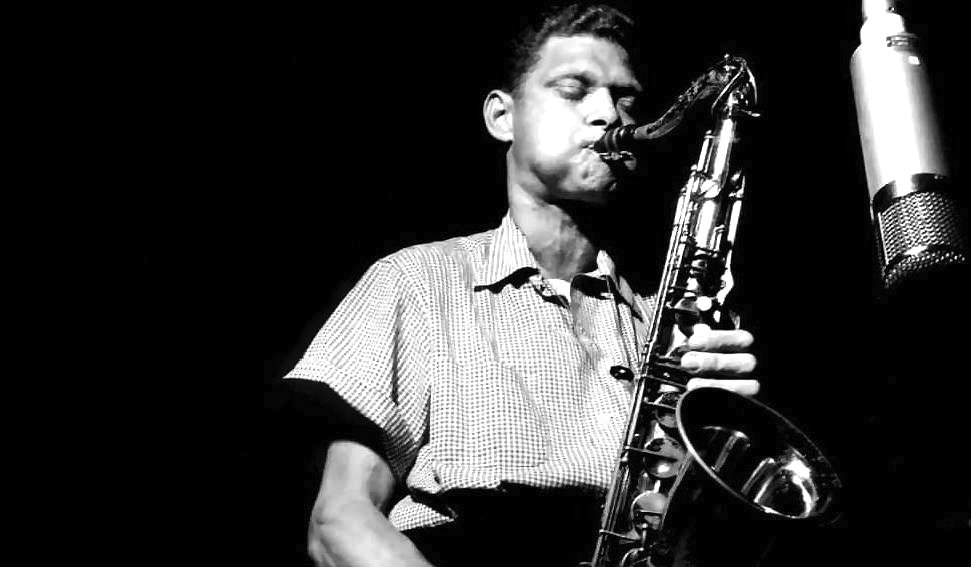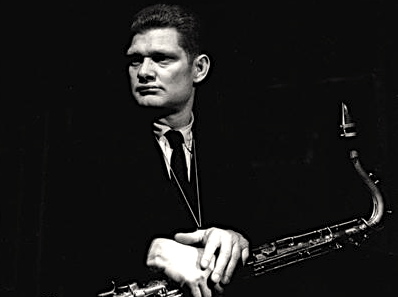
John Haley “Zoot” Sims (saxophonist) was born on October 29, 1925 in Inglewood, California and passed away on March 23, 1985 in New York City at the age of 59.
Zoot grew up in California as the youngest child in a family of vaudeville performers. Before long, Sims took up the only instrument left in the house, a curved clarinet. His interest in jazz was sparked when he explored his older brother’s record collection, which included recordings featuring Ben Webster and Lester Young. The recordings had such an impact that within two years Zoot hit the road, performing with the big bands of Bobby Sherwood and Ken Baker.
Sims’ signature sound formed in the early 1940s, when he surfaced in Los Angeles’ fertile Central Avenue scene. Clarinetist and bandleader Benny Goodman discovered him and immediately recruited him for his band. In 1947 Sims landed an even higher profile gig when he joined Woody Herman’s famed Second Herd, along with fellow saxophonists Stan Getz, Herbie Steward and Serge Chaloff. Together, the quartet of sax players was known as the Four Brothers, after a Jimmy Giuffre composition written for them, and became famous for their deft unison lines and the novelty of their dark, sweet sound.
After leaving the Herd and turning up in New York, Sims went through a period of freelancing and unsteady work. In 1953 he joined the Stan Kenton band, which provided a regular paycheck. But the band’s music — emphasizing tightly-knit group passages that allowed for only short solos — and Kenton’s stern, top-down leadership didn’t mesh well with the easygoing, yet musically hard-driving Sims. He didn’t stay long with the band, quitting on the spot after their bus wrecked along a Pennsylvania highway.

Zoot retreated to California, but he found few performing opportunities and wound up working as a house painter. Baritone saxophonist Gerry Mulligan rescued Sims from his day job when he invited Zoot to help expand his well-known, pianoless quartet. As trombonist and band member Bob Brookmeyer remembers, Sims and Mulligan were “connected by the bone” as both players and improvisers.
In the mid and late ’50s, buoyed by his success with Mulligan, Zoot would release many recordings as a leader — 10 in 1956 alone. Nevertheless, he remained a great collaborator and team player, and he inevitably returned to winning partnerships. In 1957, Zoot hooked up with an old friend, tenorman Al Cohn. Together, they formed perhaps the most successful partnership of Zoot’s career, co-leading an ensemble for many years.
Later in his career, Sims continued to evolve as a player. According to saxophonist and composer Bill Holman, Zoot’s tone aged and became gruffer, and he expanded his repertoire thanks to the influence of pianist Jimmy Rowles. But he never gave up on what many consider his greatest asset: his incredible sense of swing. “No matter what he played, it was perfectly in time,” said saxophonist Harry Allen. “If you were making your own perfect saxophone player up in your head, that’s where you’d put the notes. And [Sims] managed to do that without fail.”
Sims was, in fact, one of jazz’s great collaborators: on many of the albums he made as a leader, he shares the spotlight. These include his two albums with orchestral accompaniment, The Waiting Game from 1966 with Gary McFarland and Only A Rose with The Metropole Orchestra of Holland in 1974.
The long list of his collaborators includes Bob Brookmeyer, Bucky Pizzarelli, Hans Koller, Buddy Rich, Jimmy Rowles, violinist Joe Venuti and saxophonists Art Pepper and Eddie “Lockjaw” Davis. He also participated on the famous Interplay album of 1962 with Freddie Hubbard, Bill Evans, Jim Hall, Ron Carter, and Philly Joe Jones.
Sims’s late tenor sound was a direct inspiration for a later generation of mainstream tenor players like Scott Hamilton and Harry Allen. His last album was a two-tenor tryst with Hamilton, recorded in Sweden.
By the early ’80s, a weakened liver forced Sims to quit drinking. His health improved at first, but he soon learned that he had cancer. “If I can’t play, then what can I do?” he asked bassist Red Mitchell in an interview only a few months before he died. Zoot Sims continued to perform up until his death in 1985, and he never lost touch with the swing that had always enlivened his playing.